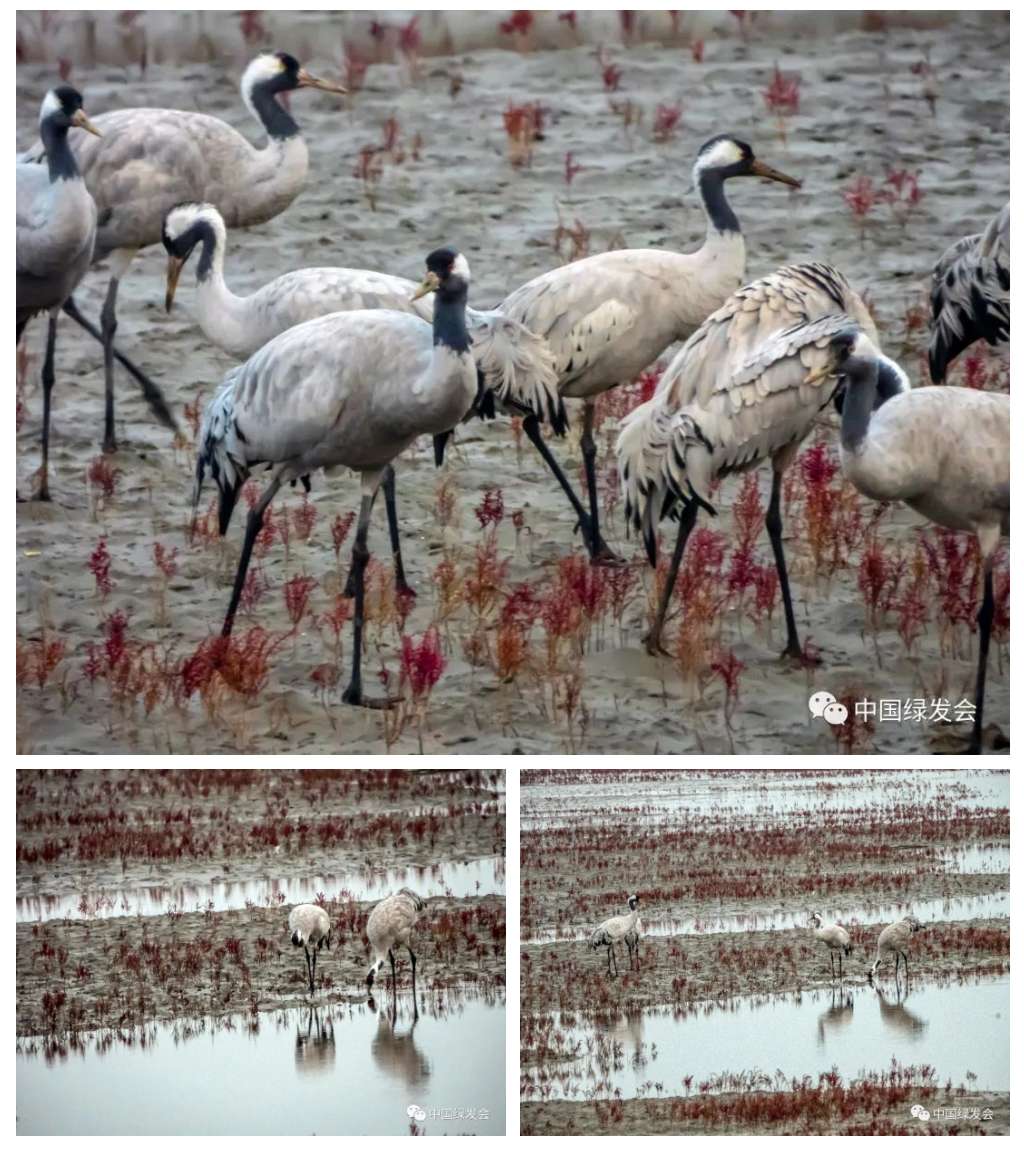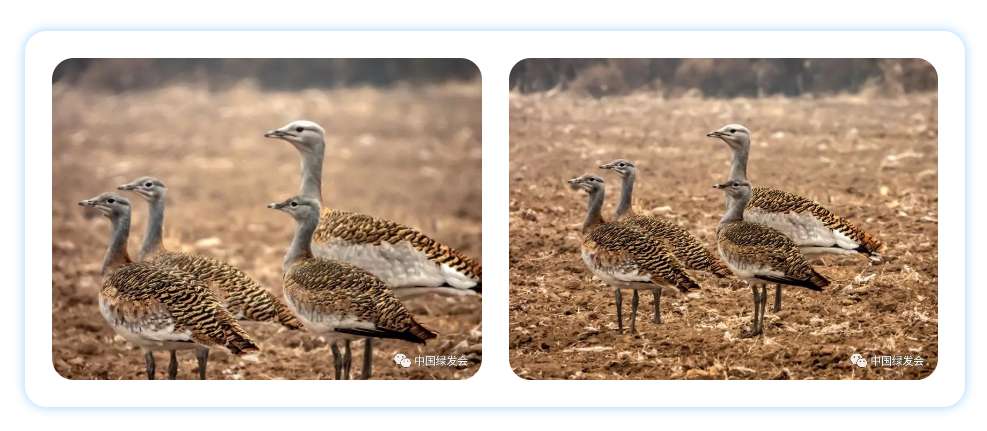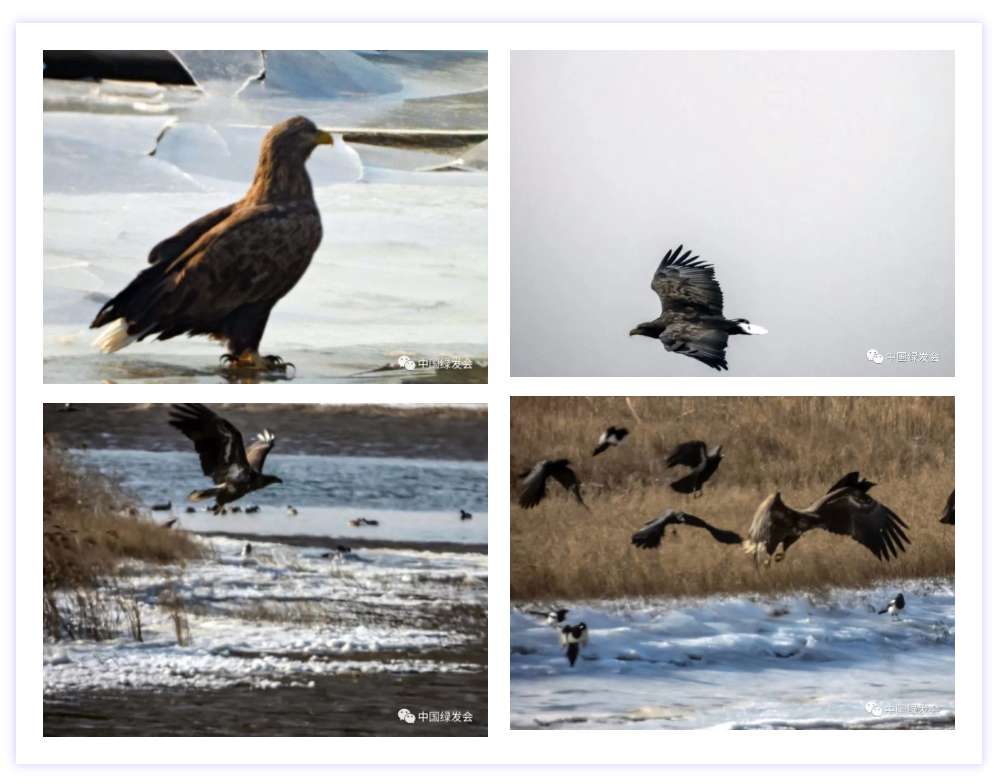The mudflats of Xiaoling Estuary are an important migration stop for a large number of endangered species worldwide. The most important species include the great knot, the red knot, and the great curlew. These three bird species are long-distance migratory birds, who are wintering mainly locate in the southern hemisphere of Australia, New Zealand, and other places. In February and March every year, when they start their migration, they will continuously fly in clusters to reach the only stopover in their migration process. This stopover is mainly the Bohai Sea area in China, and the mudflats at Xiaoling Estuary in Jinzhou, which is an important part of it. This year, a team from Beijing Forestry University conducted preliminary studies of plovers in Xiaoling Estuary and nearby beaches, focusing on benthic organisms and the bearing capacity of beach birds, as well as the number of endangered great knots. The team drilled more than 100 sample pits on the beach at Xiaoling Estuary, sifted the benthic organisms from the mud, counted and classified them. Although due to the impact of the epidemic, it is not possible to enter the school laboratory for final statistics, the preliminary results are encouraging. One of the most important data is the number of Potamocorbula laevis, about more than 500 per square meter, which is higher than that of Donggang tidal flat in Dandong and the Sliver mudflat in Jiangsu, which is quite encouraging. In the study, the team counted about 4, 200 giant sandpipers on an area of about 1 square kilometer of the shoal. The number of migratory sandpipers is staggering. In the statistical process, we also observed a large number of ringed great sandpipers, which, from the perspective of the shape of the rings, they were ringed in the overwintering period of eastern Australia. This proves that the Xiaoling Estuary is an important stop-over point in the migration route of the great knot, the red knot, and the great curlew. These birds have only one stop during their annual migration, and after feeding for a month or so, they fly directly to their breeding grounds in Kamchatka or Alaska. The research results show that the tidal flats at the mouth of the Xiaoling River in Jinzhou have important ecological value for the migration of plovers which are irreplaceable.
Xiaoling estuary is rich in topography, part of the winter channel is not completely frozen. These partially frozen watercourses are the overwintering areas for a large number of ducks including spotted bill duck, mallard duck, red ma duck, common autumn sand duck, spotted autumn sand duck, and needletail duck. In the winter of 2017, there were white-eyed diving ducks that had overwintered. It is also a migratory stop for many rare wild geese and ducks. Migrating geese and ducks stop off in the class here mainly whooper swans, little swan, swan goose, bean goose, short mouth bean goose, bias geese, small bias goose rowan, grey goose, duck, duck, red duck neck, garganey, green wings the duck, duck, red chest merganser, supercilious diving duck, redhead dive, dive crested duck, duck red mouth dive, sail back diving duck QingTou latent, ducks and others. Among them, the common pochards are the most precious and the number of them is not more than 1000. The transit time is mainly from early March to early May every year, and from September to late November in autumn. At the same time, there are recorded sightings of game birds, common cormorants, and small birds.
Xiaoling Estuary is also an important habitat for gulls, the most valuable of which is Larus relictus and black-headed gulls. Larus relictus can be seen almost all year round in Jinzhou, and most of the time they are subadults, which are non-breeding individuals. Every year from March to April and from September to October, the Larus relictus of breeding population stop on the beach of Xiaoling Estuary in Jinzhou, which is an important stopping place for migration of the Larus relictus. At the same time, Xiaoling Estuary is breeding grounds of Larus saundersi, in the breeding season, we see a large group of Larus saundersi feed on mudflats of Xiaoling Estuary. At the beginning of 2020, we discovered the breeding of Larus saundersi on three-piece of wasteland on the higher ground of the Xiaoling Estuary. We have been monitoring for a total of 12 Larus saundersi and all had hatched the nestlings. These findings indicate that the Xiaoling Estuary is a new breeding ground for Larus saundersi, and the breeding population is relatively scattered. However, these quantities cannot be counted. The findings indicate that there is no doubt that the Xiaoling Estuary is a breeding ground for Larus saundersi.
Because of the abundance of food, large numbers of raptors also wintered here including white-tailed sea eagles that feed on various wild geese and ducks, falcons that feed on medium-sized birds, vultures that feed on scavenger, harpers that feed on small birds, and kestrels that feed on rats. Among them, white-tailed sea eagle is a national first-class protected animal, falcons and vultures are about to be upgraded to a national class ii protected animal; Harrier and kestrel are two protected national animals. Xiaoling Estuary is an important wintering and migratory stopover site for raptors, which is also of great ecological value.
Jinzhou is the north entrance of Liaoxi Corridor and the main migration channel for a large number of passerine birds. Xiaoling Estuary is just on this main channel. The most significant thing is the abundance of rice fields can provide plenty of food for passerine birds. That food mainly comes from Lepidoptera pests of the farmland. The most important one of these passerine birds is the globally endangered yellow-breasted bunting. The large paddy fields from the Xiaoling Estuary to the Daling Estuary provide an important migratory stopover for the yellow-breasted bunting, especially from mid-August to early October in autumn. If the farmland, especially the rice fields, were to be developed, the yellow-breasted bunting's migration would have an unpredictable and unpredictable impact.
To sum up, Xiaoling Estuary has rich terrain, rich ecosystem integrity, rich species including benthonic mollusks, aquatic plants, insects. They have formed a complete ecological system with a variety of songbirds, waders, swimming birds, birds of prey, etc. It has played an important role as a breeding grounds, migration stops, and wintering site. If the large-scale development and utilization have conducted, it will become an industrial park, these effects above are completely lost, and the ecological damage is immeasurable, the ecological consequences are unpredictable. I suggest, therefore, CBCGDF immediately contacts local authorities and they will jointly hold a Xiaoling Estuary ecosystem research, inviting domestic first-line ecologist, conducting on-site investigation and discussion. Then we will form the conclusion and submit to the Jinzhou city government in order to protect the biodiversity and ecological environment of Xiaoling Estuary. To make green mountains and clear water be equal to mountains of gold and silver.







(Photo credit: Yu Lian)
Original Chinese article:
http://www.cbcgdf.org/NewsShow/4854/13038.html
By / Liu Xiling (Volunteer)
https://www.paypal.me/CBCGDFChina
http://www.cbcgdf.org/English/ConfirmDonaTion/0.html


